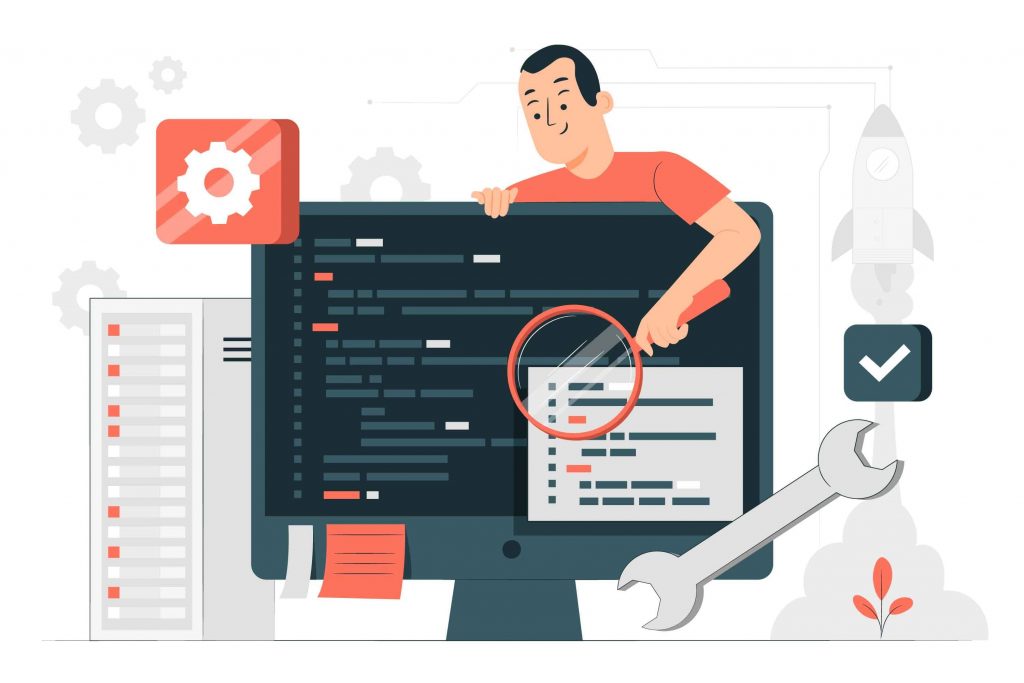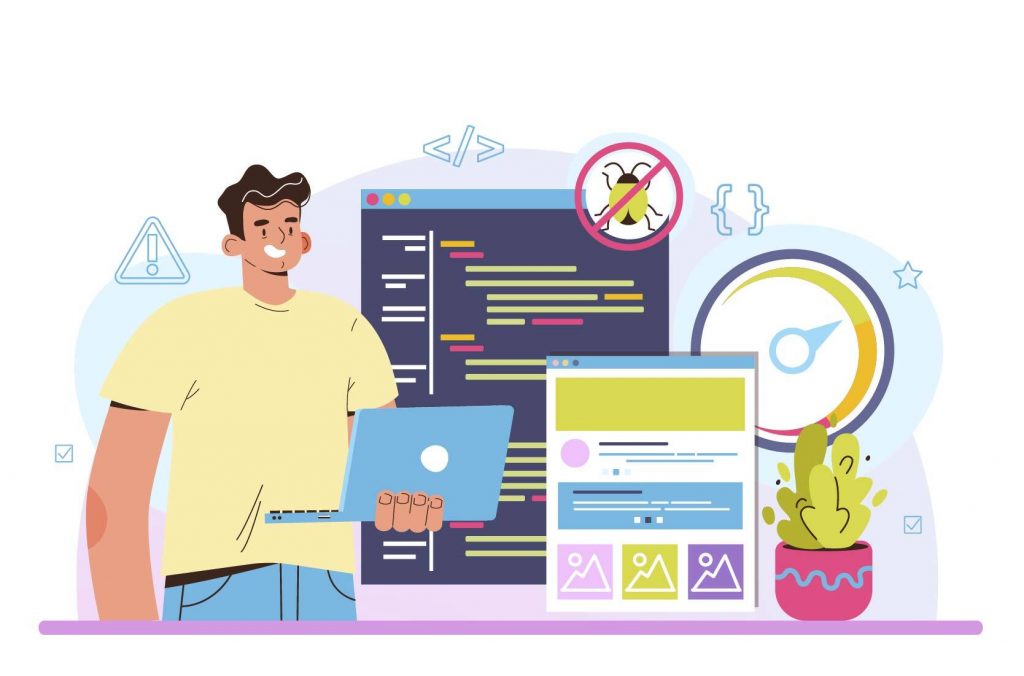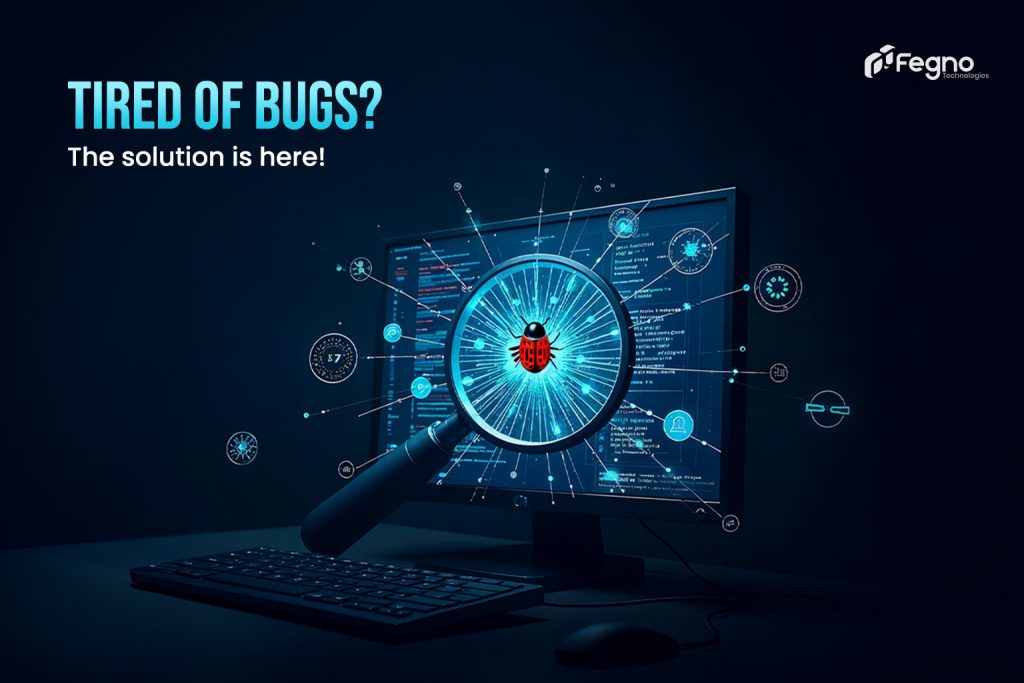Bugs are not as big as our lives, but they are important in the software development world. When it comes to developers, it is one of their nightmares. So, the bottom line is that it’s difficult to develop a product without a single bug; that’s how it became an inevitable part of developers’ lives. As we mentioned, it’s a task to avoid bugs, but what makes a developer truly efficient is their keen ability to find the bug as early as possible. This can not only improve product quality but also, as a developer, this capability can earn you the title of a pro developer.
To find bugs, we have a lot of tools and procedures. However, following them properly is very important. So, here we will discuss how we, as developers, can prepare to achieve a bug-free product.
How can you guarantee a bug-free product?
1. Adopt a QA Mindset
In the software development world, the bond between QA and developers must be strong and crucial. However, in many cases, there tends to be friction between these two teams. The primary reason for this conflict is, as we all know, ‘bugs.’ To avoid these misunderstandings and occasional tensions, developers should cultivate a QA mindset within themselves. This approach will help them identify minor bugs in the early phases of development, preventing them from being caught by QA later on.

2. Code Reviewing Mechanism
Code review always plays a very important role in the software development process. To improve quality, and maintainability to assure adherence to coding standards developers have to evaluate each other. This process’s main goal is to discover the defects, ensure best practices are followed, upgrade code readability, and encourage cooperation among developers. So simply we can say that this code review makes sure that the codebase remains efficient, clean, and bug-free.
What is Code Review?
Code review is the process of manually inspecting the source code written by one developer, conducted by their peers or team members. It is typically done before the code is merged into the main codebase. This practice ensures that the code meets the team’s quality standards, is free of bugs, follows the design and architecture guidelines, and improves overall software quality.
One of the primary reasons for code reviews is to identify bugs, inefficiencies, and potential issues early before they reach production. This helps in minimizing costly fixes later.
Types of Code Reviews
In different Review types which suited for different types of scenarios, one of the most important methods is tool-assisted code review. Compared to traditional review approaches, these modern techniques stand out due to their tools like GitHub, GitLab, Bitbucket, and Phabricator. These tools facilitate the detection of syntax errors, style inconsistencies, or potential vulnerabilities through automated checks.
Additionally, pair programming pairs two developers together: one code while the other reviews in real-time, enabling immediate solutions. Automated code reviews also play a crucial role in identifying common issues early. Although they do not replace human reviews, they effectively complement them by catching low-level problems. Other methods, such as over-the-shoulder reviews and email-based reviews, are also available.
3. QA Side Processing
QA Side processing refers to the well-organized approach for certifying that a service or product meets the objective of the purpose and standards during its development process. which include:
- Requirements Analysis: A deep understanding of the needs of users.
- Test Planning: Create a test strategy that outlines the approach, scope, and schedule of testing activities.
- Test Case Design: Developing well-explained test cases that define the execution steps and expected outcomes for different scenarios and inputs.
- Test Execution: This includes running the tests and documenting the results.
- Defect Tracking: Before releasing the product, it makes sure to log, track, and manage any defects to ensure they are resolved.
- Regression Testing: After fixing the defaults, retest the application to ensure that the previous functionalities remain unaffected.
Types of QA Side Processing
- Manual Testing: This includes human testers, without the use of any automation tools.
- Automated Testing: In this automation test, we use tools and scripts that promote efficiency.
- Performance Testing: It analyzes the response, scalability, and stability of the application under various conditions.
- Security Testing: As usual, its main purpose is to ensure the protection of data by identifying vulnerabilities in the software.

4. QA Tools
Quality Assurance (QA) tools are the main key used to ensure that the software application meets the expected standards in terms of performance and security. Based on various purposes and functionality, these tools are categorized into several types:
(a) Test Management Tools: In this section, with the help of popular tools like JIRA and TestRail, we can make the planning, tracking of tests, and, very importantly, execution well-organized. Also, these tools help to monitor testing progress, document test cases, and report bugs.
(b) Automation Testing Tools: As the name suggests, it helps to automate test cases without the need for any manual intervention. Tools like Selenium and QTP (Quick Test Professional) are very suitable for regression testing, especially when code changes are made. It is very important to ensure that the new updates do not affect the previous functionalities. It also helps to speed up the testing process.
(c) Performance Testing Tools: In certain load conditions, when we have to focus on response with the help of tools like Apache JMeter and LoadRunner, we can quicken the user loads. It also helps to find out how well the application performs in terms of stability and speed.
(d) Security Testing Tools: When it comes to finding out the defaults in the system tools, OWASP ZAP and Burp Suite have great importance. From threats like SQL injection and cross-site scripting (XSS), these tools help ensure that the application is resistant
(e) Cross-Browser Testing Tools: With the help of tools like BrowserStack and Sauce Labs, we can find out how the web application works in different browsers. These tools can bring high-quality software by ensuring a wide approach to testing.

5. Remote Monitoring and Debugging
Debugging is a process where it finds errors, commonly known as bugs in the world of coding. With the help of efficient debugging tools, developers can detect errors as early as possible and resolve them. This process improves code quality and minimizes development time. The tools that are used on the developer’s machine are typically integrated into the development environment, like Browser Developer Tools and command-line Debuggers.
Even after the development process, these bugs can occur, even in the user experience. At that time, remote monitoring comes as a savior. Remote monitoring is a process where, with the help of tools and technologies, developers can manage and track code changes, check application performance, and monitor various aspects of the development cycle from anywhere.
Also, CI/CD pipelines play a crucial role in the debugging process. They help organize the development life cycle, allowing the team to implement code changes efficiently. This confirms that CI/CD significantly streamlines the debugging process, especially remote monitoring.
Conclusion
A bug-free product may seem like a challenge, but by following the right approach, the journey can be highly rewarding. Remember, never imagine a product completely without bugs, because that’s a universal reality. Bugs can occur, but creating a bug-free product isn’t about achieving perfection. What matters is how we transform it into a symbol of excellence.


 Schedule An Appointment
Schedule An Appointment